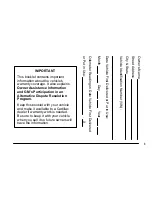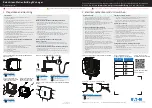
154
BMW 318d
BMW 320d
BMW 320d
BMW 330d
BMW 330d
Urban
Extra-urban
Combined
CO
2
emissions
litres/100 km (mpg)
litres/100 km (mpg)
litres/100 km (mpg)
grams/km (oz/mi)
5-sp. manual
7.4 (38.2)
4.5 (62.8)
5.6 (50.4)
149 (8.5)
5-sp. manual
7.6 (37.2)
4.4 (64.2)
5.5 (51.4)
148 (8.4)
Automatic
9.7 (29.1)
5.4 (52.3)
6.9 (40.9)
185 (10.5)
5-sp. manual
9.2 (30.7)
5.3 (53.3)
6.7 (42.2)
178 (10.1)
Automatic
11.1 (25.4)
6.2 (45.6)
8.0 (35.3)
213 (12.1)
BMW 330xd
BMW 330xd
Urban
Extra-urban
Combined
CO
2
emissions
litres/100 km (mpg)
litres/100 km (mpg)
litres/100 km (mpg)
grams/km (oz/mi)
5-sp. manual
10.1 (28.0)
6.2 (45.6)
7.6 (37.2)
202 (11.5)
Automatic
12.0 (23.5)
6.8 (41.5)
8.7 (32.5)
232 (13.2)
Fuel consumption is determined according to a standard test method 93/116/EU. It is not the same as the average fuel
consumption in practice, which depends on a great many different factors such as driving style, load, road condition, traf-
fic density and flow, weather, tyre pressures etc. Engine power output and road performance data are measured in the
conditions laid down by 80/1269 EU and DIN 70 020 with the car to standard specification. This standard specifies the
permitted tolerances. Additional equipment on the car may have quite a significant influence on both performance and fuel
consumption, since it usually affects the car's weight and c
x
value (drag coefficient), for instance roof rack, wider tyres,
additional mirrors etc.
BMW 325xi, 330xi, 330xd: power can be tested only on a suitable dynamometer.
Fuel consumption, carbon dioxide/CO
2
emissions
handbook.book Page 154 Thursday, December 19, 2002 4:29 PM
All manuals and user guides at all-guides.com
all-guides.com
















































